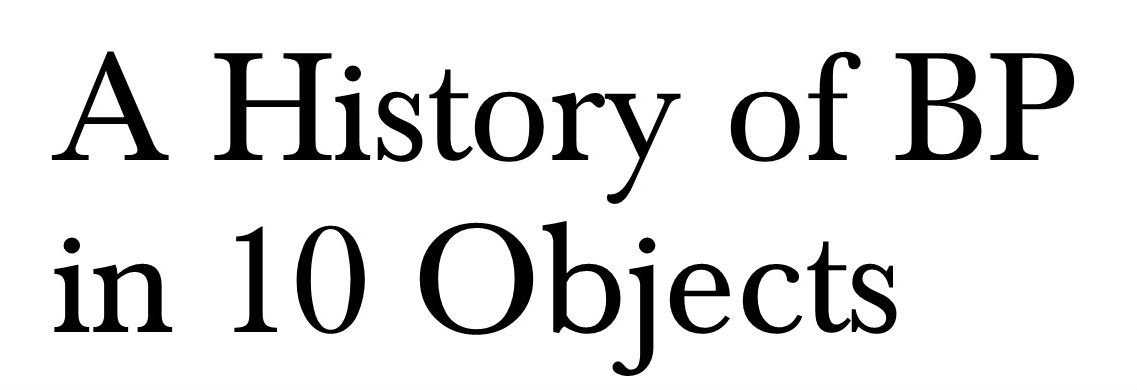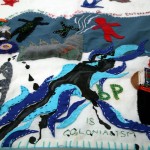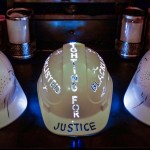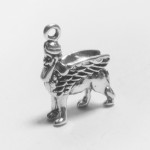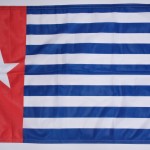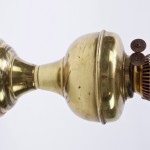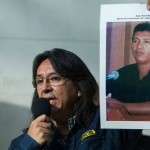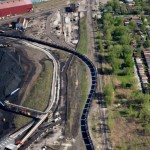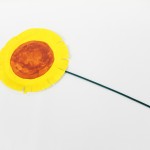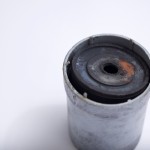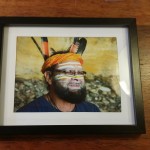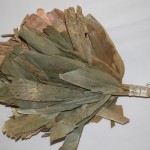For the last twenty years, BP has sponsored the British Museum.
Over the same period, they’ve been linked to countless human and environmental abuses, while working to a business plan which makes climate breakdown inevitable.
This exhibition brings together objects sent from communities around the world and asks: why does the British Museum continue to work with this corporate criminal?
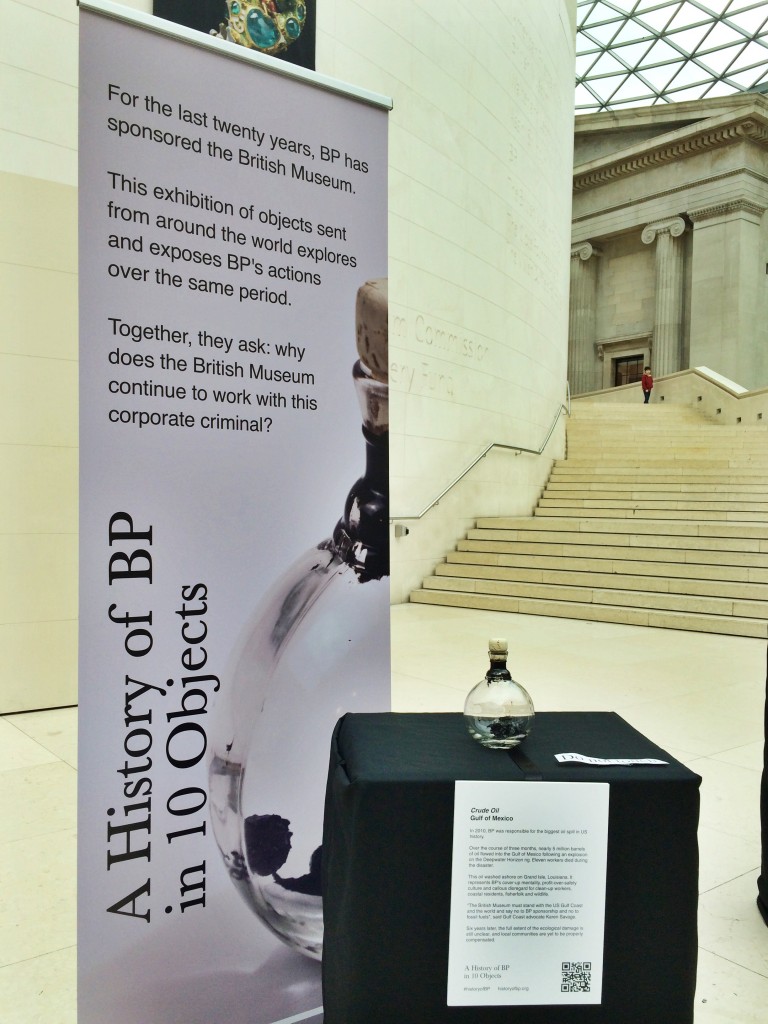
“Crude Oil”, on display without permission in the British Museum. Photo by Amy Scaife
The exhibition was displayed in the British Museum – without permission – on Sunday 3 April, as part of our welcome to the museum’s new director Hartwig Fischer. We took over a large area of the Great Court from 11am to 5.30pm, and were joined by people and groups who had submitted objects to the exhibition, including Rafa Semilla from Colombia (see Waira), the Blacklist Support Group (see Hard Hat) and London Mexico Solidarity, Movimiento Jaguar Despierto and Wretched of the Earth (see Arpillera).
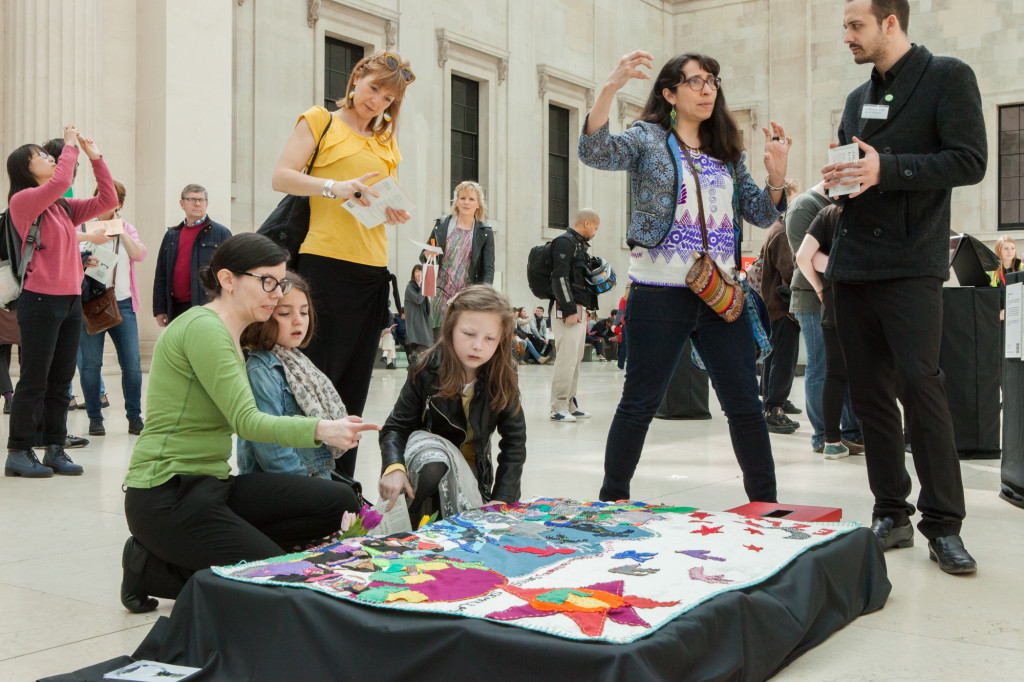
Visitors are shown the Arpillera by members of London Mexico Solidarity. Photo by Amy Scaife
Hundreds of museum visitors and staff engaged with the exhibition, and we received overwhelmingly positive feedback. Museum security watched us but did not interfere; some security guards came over and examined the exhibits for themselves.
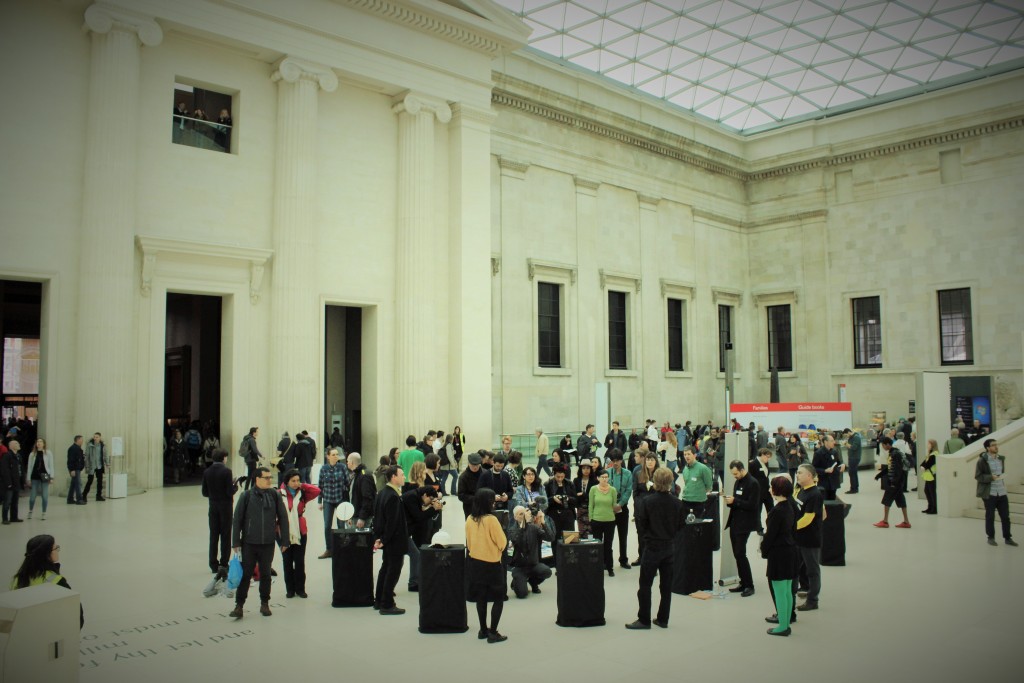
Visitors browse the exhibition, in situ at the British Museum – photo by London Mexico Solidarity
The exhibition was covered in a full-page article in the Guardian, as well as in the Telegraph, Artlyst, Huffington Post and other outlets. You can see more photos from the day in our Facebook gallery.
The communities which submitted the exhibits have officially gifted the objects to the British Museum, and these are being formally submitted to be considered for permanent display.
One of Fischer’s first responsibilities will be deciding whether or not to renew the BP sponsorship deal for another five years. Help him make that decision by signing this petition.
These objects only present a snapshot of BP’s many forms of injustice and exploitation. Many other groups around the world are threatened by BP’s actions, and are on the front lines of resistance to their destructive practices. These activists, trade unionists and communities are present in other aspects of our work, and in the conversations we hope to inspire through this exhibition.
Want to know more about BP’s destructive history? The author Andrew Simms has kindly donated a chapter of his book to this site, here:
BP – The first exploitation company. From Eminent Corporations: The Rise and Fall of the Great British Brands by Andrew Simms and David Boyle, 2010. Reproduced with permission of the authors.
About BP or not BP?
This exhibition is curated by BP or not BP?
BP or not BP? is a theatrical protest group which challenges fossil fuel sponsorship of arts and culture. It was founded in 2012 in response to BP’s sponsorship of the Royal Shakespeare Festival.
Since then, the group has acted as part of the broader Art Not Oil coalition, performing theatrical protests in fossil fuel sponsored spaces without permission.
We do this to erode the power of fossil fuel companies. Their sponsorship of institutions like the British Museum is a core part of preserving their social licence to operate. It provides a veneer of respectability which masks their human rights abuses and environmental degradation.
Our work undermines this social licence, and exposes their damaging and destructive practices.
A History of BP in 10 Objects is our first exhibition.
